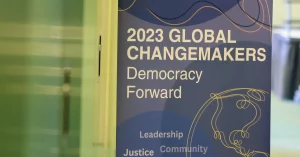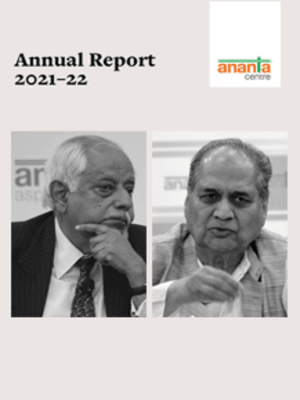HIGHLIGHTS
• Government finances better with higher tax revenues
• Poor disinvestment and slow capex rise cause for concern
• Delicensing power distribution part of big legislative agenda
• Implementing power distribution reform key to its success
• New law to pave the way for general insurance privatisation
• IBC tweaked to allow pre-pack resolution of stressed MSMEs
• Easier access to insured deposits in banks facing moratorium
• Mining law change to facilitate land acquisition
• Ministry size up 45 per cent, a dozen existing ministers axed
• Ministries streamlined to create integrated portfolios
• Many new ministers to hold key to govt performance
• Watch out for new cooperation ministry, DPE transfer to Finmin
• RBI Governor bats for growth, expects inflation to moderate
• RBI projects growth at 9.5 % in 2021-22, but CEA more hopeful
• Retail and wholesale inflation elevated, causes concern
• Low base effect propels robust industrial growth
• GST collections rebound after setback in June
• Direct taxes buoyant helped by lower refunds
• India rating maintained; upgrade likely if inflation moderates
• Exports up, but higher imports widen trade deficit
• Govt package after second wave of Covid: Rs 6 lakh crore
Government finances better with higher tax revenues
The Union government’s finances for the first quarter of 2021-22 are in much better shape than what the earlier gloomy projections had indicated. Its fiscal deficit at the end of June 2021 was only 18 per cent of the full year’s Budget Estimate (BE). Last year, at the same time, the deficit was over 83 per cent of the full year’s BE for 2020-21. This is quite a remarkable turnaround in the state of the government’s finances. Three factors have been responsible. One, tax revenues have shown healthy buoyancy. At Rs 4.13 lakh crore, they accounted for about 27 per cent of the full year’s BE. Last year, this share was just about 8 per cent. The pick-up in tax revenues is on account of sharp increases in corporation tax (thanks to India Inc.’s rise in profits), personal income tax and the goods and services tax. At the current rate, the government may end the year with higher tax revenues than Rs 15.45 lakh crore, budgeted for the full year. Two, non-tax revenues also rose significantly to Rs 1.27 lakh crore, more than half of the BE of Rs 2.43 lakh crore. Last year, this share was only about 4 per cent. The increase in non-tax revenues was fuelled by a big rise in the dividend declared by the Reserve Bank of India. Three, total expenditure was reined in at Rs 8.2 lakh crore, about 24 per cent of the full year’s BE for 2021-22. Last year, this share was higher at 27 per cent.
Poor disinvestment and slow capex rise cause for concern
Two worry points, however, surfaced regarding government finances. One, the pace of capital expenditure in the first quarter, though healthy, was below the levels needed in a pandemic year to provide the much-needed investment stimulus in the economy, particularly at a time the growth in private sector investment has remained tepid. Two, despite a booming stock market, the government failed to speed up the implementation of its privatisation and disinvestment plans. Revenues by way of such non-debt capital receipts were estimated at only Rs 7,400 crore, against the annual target of Rs 1.88 lakh crore. It is to be hoped that both capital expenditure and the pace of disinvestment will see a pick-up in the remaining three quarters of the current fiscal year.
Delicensing power distribution part of big legislative agenda
For the ongoing Monsoon session of Parliament, the government has put together an impressive list of economic legislation. If all the bills are approved during the session, scheduled to end on August 13, the government could take credit for having pushed difficult reforms in a host of new areas. The most important legislation is the electricity amendment bill. It proposes to introduce a big reform in the electricity distribution sector. For the last many years, the private sector has been allowed to enter power distribution sector. But these reforms have been incomplete as they have simply replaced a state-sector monopoly power distributor with a private-sector monopoly power distributor. Obviously, the desired benefits through competition and more choices for electricity consumers have not resulted. The Electricity Act did talk about open access, but this was tied to many conditions, which were never met. So, the last two decades saw many state-owned power distribution companies being privatised, but there was no real competition. The proposed bill will delicense power distribution. Effectively, this will allow any entity – be in the private sector or the public sector, enter any distribution area of any city and offer an alternative distribution service to consumers. The earlier protection, enjoyed by the privatised distribution networks or the state-owned distribution outfits should disappear over time. It is a difficult reform, but if implemented well, this could be a path-breaking move in the power distribution sector.
Implementing power distribution reform key to its success
Many questions will arise to the sanctity of the existing licences of distribution that existing players have. One has to see how the interests of the incumbents are kept in mind, while allowing more competition and more choices for electricity consumers. Remember that in the past, the idea of open access faced stiff resistance from incumbent players, and it never made headway. Delicensing is a new idea and if implemented well, by ensuring that incumbent players are also free to lease out their existing services to new players, it could lead to efficiency gains for the sector and consumers. The battle after delicensing will be for owning the customer by providing the last-mile power connectivity between the consumer household and the local area transmission sub-stations. A bold decision, long awaited, but its success depends on careful implementation.
New law to pave the way for general insurance privatisation
In the financial sector, the government introduced in the Lok Sabha on July 30 a legislative bill that is aimed at divestment of the general insurance sector. The General Insurance Business (Nationalisation) Amendment Bill, 2021 should pave the way for the privatisation of state-run general insurance companies, in keeping with the Union Budget’s promise in February 2021. Finance Minister Nirmala Sitharaman had stated the following in her Budget: “We propose to take up the privatisation of two public sector banks and one general insurance company in the year FY22.This would require legislative amendments..” The Union Cabinet cleared the amendment to the general insurance law on July 28 and without losing much team the bill was presented after two days. The path towards privatising general insurance companies will be cleared once the bill is approved by Parliament and signed by the President.
IBC tweaked to allow pre-pack resolution of stressed MSMEs
Parliament is set to discuss and approve fresh amendments to the insolvency and bankruptcy resolution law to effectively allow the owners of micro, mini and small enterprises (MSMEs) escape from its provisions under which they could lose their companies if their debtors took them to NCLT under the Insolvency and Bankruptcy Code (IBC). This is a kind of a legislative forbearance considering the Covid-led distress among the MSMEs. Strictly speaking, these dilute the functioning and effectiveness of the IBC. Pre-packaged resolution of insolvency cases will now be allowed, under which defaulting promoters can pay up the dues under a negotiated settlement. It is to be hoped that the coverage of this amendment is not expanded to cover other sectors. There are many problems with the IBC. But these problems must be resolved without diluting its basic spirit. Not fair to give up essentially a good idea, without giving it a fair trial.
Easier access to insured deposits in banks facing moratorium
Among the new bills to be taken up in the Monsoon session of Parliament is the one that will be good news for bank depositors, who face the trauma of their deposits being blocked for years when their bank is in financial trouble. The Reserve Bank of India, for good reasons, places an embargo on the operations of the troubled bank till a resolution is found. This can take weeks and even months. In the interim, the depositors realise that they have lost all access to their deposits. They cannot even claim their deposits, up to Rs 5 lakh, which are protected under the deposit insurance and credit guarantee law. The proposed amendment will allow access to such deposits in the case of a bank in trouble and comes under a moratorium order from the RBI. A depositor can access her deposits up to Rs 5 lakh within 90 days of the closure of the bank. Earlier, depositors could access these deposits only after the bank’s liquidation, which could take years.
Mining law change to facilitate land acquisition
Another proposed amendment seeks to make easy the process of mining companies acquiring or leasing land for undertaking their operations. At present, the law on acquisition of land for mining purposes is stringent and even though private coal mining is allowed, the legal change has failed to make a difference because of the rigidities in acquisition or leasing of land for mining by such companies. Similarly, the Limited Liability Law is to be amended to decriminalise as many as 12 provisions, in line with a similar exercise that was undertaken for the Companies’ Act.
Ministry size up 45 per cent, a dozen existing ministers axed
July saw the biggest ministerial reshuffle effected by the Narendra Modi government. On July 7, the size of the Union council of ministers was raised by 45 per cent – its strength went up from 53 to 77, excluding the prime minister. Can the government further increase the size of its ministry? Technically, yes. The size of the council of ministers could go up to 81 or 15 per cent of the strength of the lower house of Parliament.
But more importantly, the increase in the size of the council of ministers was preceded by a bigger drama. About a dozen existing ministers – many of them enjoying a high profile and considered close to the prime minister – were dropped. Never in recent past did a prime minister get rid of so many of his ministers from key portfolios. Clearly, the prime minister not only wanted to strengthen his team of ministers, but also send out a message that he would not hesitate from taking a hard decision like dropping well-established ministers.
Ministries streamlined to create integrated portfolios
The high-profile ministers dropped in this exercise included Harsh Vardhan from health, Ravi Shankar Prasad from communications and information technology, Prakash Javadekar from environment and information & broadcasting, Ramesh Pokhriyal from education and Santosh Gangwar from labour. Equally important has been the reshuffle of ministries among those who were spared the axe. Thus, Piyush Goyal lost railways but gained the textiles ministry, which in combination with his other existing ministries of industry and commerce would give him an integrated oversight of policies on industry and its job-creating potential. Dharmendra Pradhan lost petroleum and natural gas but got education instead along with skills development to give the government’s agenda on education reforms and skills-based job creation a big push. Hardeep Puri lost civil aviation but bagged the oil ministry, where falling domestic oil output has been a headache for the last seven years.
Many new ministers to hold key to govt performance
The star among the new incumbents was Ashwini Vaishnaw, a former Indian Administrative Service Officer, who got the sensitive portfolios of communications, information technology and railways. Vaishnaw’s new responsibilities are onerous, and his performance would be keenly watched. Also under watch will be the new health minister, Mansukh Mandaviya, on how he manages the Covid-related health challenges and the new civil aviation minister, Jyotiraditya Scindia, on how he implements the long-awaited sale of Air India and revive the fortunes of the aviation industry reeling under the impact of Covid-19. Another minister to be on watch will be Bhupender Yadav, the new labour minister, who has the formidable responsibility of bringing all states on board so that the notifications on the four labour codes, passed by Parliament, could be issued to implement the much-awaited labour reforms.
Watch out for new cooperation ministry, DPE transfer to Finmin
The big ministerial changes from an economic and socio-economic policy perspectives pertained to the creation of a separate ministry for cooperation and the shifting of the department of public enterprises from the heavy industries ministry to the finance ministry. Both the moves are significant. The creation of the cooperation ministry and placing it under the charge of the home ministry are indicative of the Modi government’s intentions on exploiting the potential of the cooperatives sector in the economy. Cooperatives account for a large chunk of the milk economy and sugar production. In addition, there are about a couple of thousand cooperative banks meeting credit requirements of the micro and mini enterprises as also small entrepreneurs. The cooperative sector’s close links with many grassroots politicians in several states including Maharashtra, Gujarat, Karnataka and Kerala are also significant. How the new cooperation ministry will exploit this potential, only time will tell. The transfer of the department of public enterprises to the finance ministry is expected to bring about greater coordination and cohesiveness in the government’s public sector policy. The finance ministry has already unveiled a policy where all non-strategic public sector enterprises will either be privatised or shut down, if they are not viable. Now, the finance ministry can take a quick call on how the new privatisation policy can be implemented.
RBI Governor bats for growth, expects inflation to moderate
Amidst concerns over rising inflation, a statement from the Reserve Bank of India Governor, Shaktikanta Das, kept the bond market steady and led to policy watchers recalibrating their assessment on the central bank’s approach to the evolving growth-inflation dynamics. In an interview with Business Standard, the Governor made it amply clear that any hasty withdrawal from the current monetary policy accommodation could neutralise the gains that had been achieved after Covid-19. Retail inflation had already crossed the upper tolerance band of 6 per cent for May by then and after the interview was published, the June print for retail inflation too was above the 6 per cent mark. The Governor clarified that while inflation was showing signs of stickiness, he viewed it as a “transitory hump”, which should moderate in the third quarter. In the process, the RBI Governor made it clear that he was batting for growth and would not support any move that departs from the ongoing accommodative stance of the monetary policy. In other words, apprehensions of an interest rate rise could be set at rest. Not that Das was unperturbed about inflation. But he wanted the incipient signs of recovery to be propped up with a supportive monetary policy, so that the Indian economy could grow at 9.5 per cent in 2021-22, as projected by the central bank. The Governor also drew comfort from the current foreign exchange reserves level of over $610 billion, which he was confident would be adequate to protect the domestic exchange rate and prevent any volatility. Caution also ruled his perspective, when he said that the reserves were adequate, but they could not be used for any purpose other than building the central bank’s resilience against possible shocks arising out of any sudden foreign exchange outflows. Not surprisingly, the bond market rallied immediately after the RBI Governor’s statement on his focus on growth. Yields fell, which effectively meant bond prices went up, signalling a softening of the interest rates. This was due to the bond market’s interpretation of the RBI Governor’s statement as a hint at the continuation of the current accommodative monetary policy. What also helped was the moderation in crude oil prices. If the yields had hardened again by the third week of July, it was because of expectations of what kind of monetary policy stance the RBI’s Monetary Policy Committee would adopt at its meeting in the first week of August.
RBI projects growth at 9.5 % in 2021-22, but CEA more hopeful
With the second wave of Covid-19 adversely impacting the pace of economic activity in varying degrees in different parts of the country, the estimate of economic growth during the first quarter of 2021-22, to be announced at the end of August, will be a keenly awaited event. Remember that India’s gross domestic product (GDP) had contracted by about 24 per cent in the first quarter of 2020-21, thanks to the economic lockdown and Covid-19. In its latest assessment, the Reserve Bank of India has noted that India’s GDP is expected to grow by 22 per cent in April-June 2021. However, there was a word of caution from the RBI. Its report on the state of the economy noted: “A solid increase in aggregate demand is yet to take shape. Even with a 9.5 per cent GDP growth in 2021-22, there will be substantial slack in the economy and demand pressures may take some more time to become evident.” On inflation, the RBI was of the opinion that the rise in retail prices was mainly due to adverse supply shocks and sector-specific demand-supply mismatches, which should ease over the year. The RBI’s projection of a 9.5 per cent growth in 2021-22 (which the International Monetary Fund also endorses) ran contrary to the projection of the finance ministry’s Chief Economic Advisor, K. V. Subramanian. According to him, India’s economic growth in 2021-22 should be around 11 per cent as the overall impact of the second wave of Covid-19 on the economy would not be very large. On the overall prospects of growth, Subramanian said: “We will grow at a high growth rate this year. This year growth will be from the lower base but we anticipate 6.5-7 per cent growth next year FY’23 and from thereon, growth accelerating even further”. He was addressing a meeting organised by the Indian Construction Equipment Manufacturers’ Association.
Retail and wholesale inflation elevated, causes concern
The spectre of rising prices continued to haunt the Indian economy. Retail inflation, measured by the movement in the Consumer Price Index (CPI), was 6.3 per cent in June, above the upper tolerance band of 6 per cent, for the second consecutive month. Retail inflation was 4.2 per cent in April and 6.3 per cent in May. The June print for retail inflation was fuelled largely by food and petroleum product prices. There was no respite from wholesale price-based inflation either, where double-digit inflation continued for the third consecutive month. For June, wholesale inflation stayed at 12 per cent, a little lower than the record high of 12.9 per cent, registered in May. In April also, inflation, based on the Wholesale Price Index, was over 10 per cent. The factors responsible for wholesale price inflation were more broad-based, including an increase in prices of petroleum products, metals, chemical products and food items. Just a year ago, in June 2020, wholesale prices declined – a deflation of 1.81 per cent. The double whammy of high retail and wholesale inflation will have adverse consequences for the Indian economy. Retail inflation hurts consumers and this depresses demand, while wholesale inflation affects producers’ cost, which feeds into an inflationary spiral that becomes difficult to rein in. Economists fear that inflation will remain elevated for the next few months.
Low base effect propels robust industrial growth
The only apparent relief on the macro-economic data front came from the latest print of the Index of Industrial Production or IIP. Industrial output in May rose by 29 per cent. But this was a statistical recovery, coming as it did over a 33 per cent contraction in industrial output in May 2020, thanks to the lockdown in the wake of Covid-19. Thus, the first two months of 2021-22 (April-May) saw industrial output rising by 67 per cent, compared to a contraction of 45 per cent in the same period of 2020-21. While industrial growth was driven by a robust recovery in the manufacturing sector, which has the biggest weight in the IIP, the tepid growth of less than 1 per cent in consumer non-durable goods in May was an area of concern arising out of the second wave of Covid-19. The data on the core sector’s performance in June, however, showed growth of 9 per cent in June 2021, compared to a contraction of over 12 per cent in June 2020. On a sequential basis, the core sector (including sectors like crude oil, petroleum products, coal, electricity, fertilisers, steel and cement) showed an output increase of 1.1 per cent in June over that in May. This showed that the economy was emerging out of the impact of the second wave of Covid-19.
GST collections rebound after setback in June
For eight months running from November 2020, collections of the goods and services tax (GST) had stayed above Rs 1 lakh crore. In one of those months – April 2021, the collections reached a record high of Rs 1.41 lakh crore. A GST collection level of over Rs 1 lakh crore or more every month augurs well for the pace of economic activity as also the new indirect taxation regime’s effectiveness. This growth between November 2020 and May 2021 was achieved through the introduction of better collection procedures like the expansion in the coverage of e-invoicing and e-way bills, which improved compliance. No less important was the gradual recovery in the pace of economic activity in this period. Thus, when the GST collections in June 2021 fell below the Rs 1 lakh crore mark for the first time in 9 months, alarm bells naturally began to ring in the finance ministry. June 2021 collections of the GST were estimated at Rs 92,849 crore. Buoyant GST collections were critical for the government’s ability to meet its expenditure commitments during 2021-22 without seeking recourse to higher borrowings. A subsequent assessment, however, showed that such fears were slightly exaggerated. The GST collections for June 2021 captured economic transactions in May, when the country came under the impact of the second wave of Covid-19. This was better than expected, though lower than the May 2021 figure of Rs 1.02 lakh crore, but higher than Rs 90,917 crore in June 2020. The reason for hope was that e-way bills generation, which had dropped to 1.2 million every day in May 2021, went up to over 2 million on average per day in June 2021. Not surprisingly, the GST collections for July 2021 recovered to Rs 1.16 lakh crore. Clearly, the government is set to reap the revenue harvest from an improvement in the pace of economic activity and tightened enforcement of GST laws through monitoring of fake bills, usage of data analytics through the collation of information on payment of other taxes and effective tax administration.
Direct taxes buoyant helped by lower refunds
The Union government’s revenue from direct taxes also remained buoyant in the first quarter of 2021-22. This was a big relief for the government’s finances. After accounting for refunds, the gross direct tax collections during April-June 2021 were estimated at Rs 2.43 lakh crore, up by 92 per cent over those in the year-ago period. This reflected higher corporate earnings and better tax collections from individuals as well. Direct tax collections in the first quarter of the current fiscal year were almost 22 per cent of the full-year’s target of Rs 11 lakh crore, which means the government seems to be well on course to exceed its direct tax collections budgeted for 2021-22. Even when compared with the April-June 2019 period, a pre-pandemic period, the collections from direct taxes were higher by 43 per cent. This is a robust growth rate. But a few important trends in higher direct tax collections are worth noting. One, corporation tax was higher than personal income-tax collections. This reverses the trend seen in 2020-21. Indeed, the Budget targets for 2021-22 had envisaged personal income-tax to be higher than corporation tax. It now seems that the earlier trend of corporation tax being higher than individual tax would be restored. Two, the stock market rally and the Google tax (imposed as equalization levy on foreign online companies earning profits from doing business in India) have seen a new source of direct tax revenue – the securities transaction tax has gone up by over 100 per cent to Rs 5,400 crore and the Google tax has risen by 300 per cent to about Rs 600 crore. And three, direct tax refunds in the April-June quarter of 2021 have seen a drop of 40 per cent. Is the drop because of last year’s expeditious clearance of refund payments or is there some other reason?
India rating maintained; upgrade likely if inflation moderates
Some relief also came from the international rating agencies. S&P Global Ratings affirmed its lowest investment-grade sovereign rating for India (Triple B Minus), dispelling earlier fears of a downgrade. The bonus was that the rating agency painted a stable outlook for the Indian economy, asserting that its recovery would gain momentum in the second half of 2021-22 beginning October 2021. It stated: “The stable outlook reflects our expectation that India’s economy will recover following the resolution of the coronavirus pandemic and that the country’s strong external settings will act as a buffer against financial strains despite elevated government funding needs over the next two years”. Going a step further, it said: “We may also raise the ratings if we observe a sustained and substantial improvement in the central bank’s monetary policy effectiveness and credibility, such that inflation is managed at a durably lower rate over time”. But it also warned of a downgrade if the Indian economy’s recovery is slower than expected or the general government deficit (including the Centre’s as well as the states’) and the total debt level exceed the rating agency’s forecasts. India’s debt-to-GDP ratio has crossed 90 per cent and S&P Global Ratings has projected a growth rate of 9.5 per cent for India in 2021-22, compared to a contraction of 7.3 per cent in 2020-21. Other rating agencies like Moody’s and Fitch also have placed India at the lowest investment-grade rating, although their outlook is negative.
Exports up, but higher imports widen trade deficit
India’s exports of merchandise goods continue to maintain healthy growth. In June 2021, exports rose by over 48 per cent to $32.5 billion, driven by higher exports of petroleum products, gems & jewellery and chemicals. India’s exports in June 2021 were much higher even when compared with the performance in June 2019, when exports stood at $25 billion. In the first quarter of 2021-22, exports increased by 86 per cent to $95 billion. Imports during the first quarter, however, rose at a faster pace to reach a level of $126 billion, up by over 108 per cent. Trade deficit, therefore, rose to $31 billion, more than trebling over the deficit level of $9 billion in the first quarter of 2020-21. But with foreign exchange reserves of well over $600 billion, widening merchandise trade deficit is not a concern.
Govt package after second wave of Covid: Rs 6 lakh crore
Early July, the Union government announced a fiscal package of Rs. 6.3 lakh crore to revive the Indian economy, affected by the second wave of Covid-19. However, the package largely consisted of credit guarantee schemes for health, tourism and micro borrowers and expansion of the emergency credit line for small businesses, especially by making financing of loans through microfinance institutions more attractive and easy. Thus, the actual fiscal outgo on account of the package was around Rs 60,000 crore. The impact of the package on the government’s fiscal deficit would be relatively small.
Supported by
………………………………………………………………………………………………
(The views expressed are personal)
………………………………………………………………………………………………

























